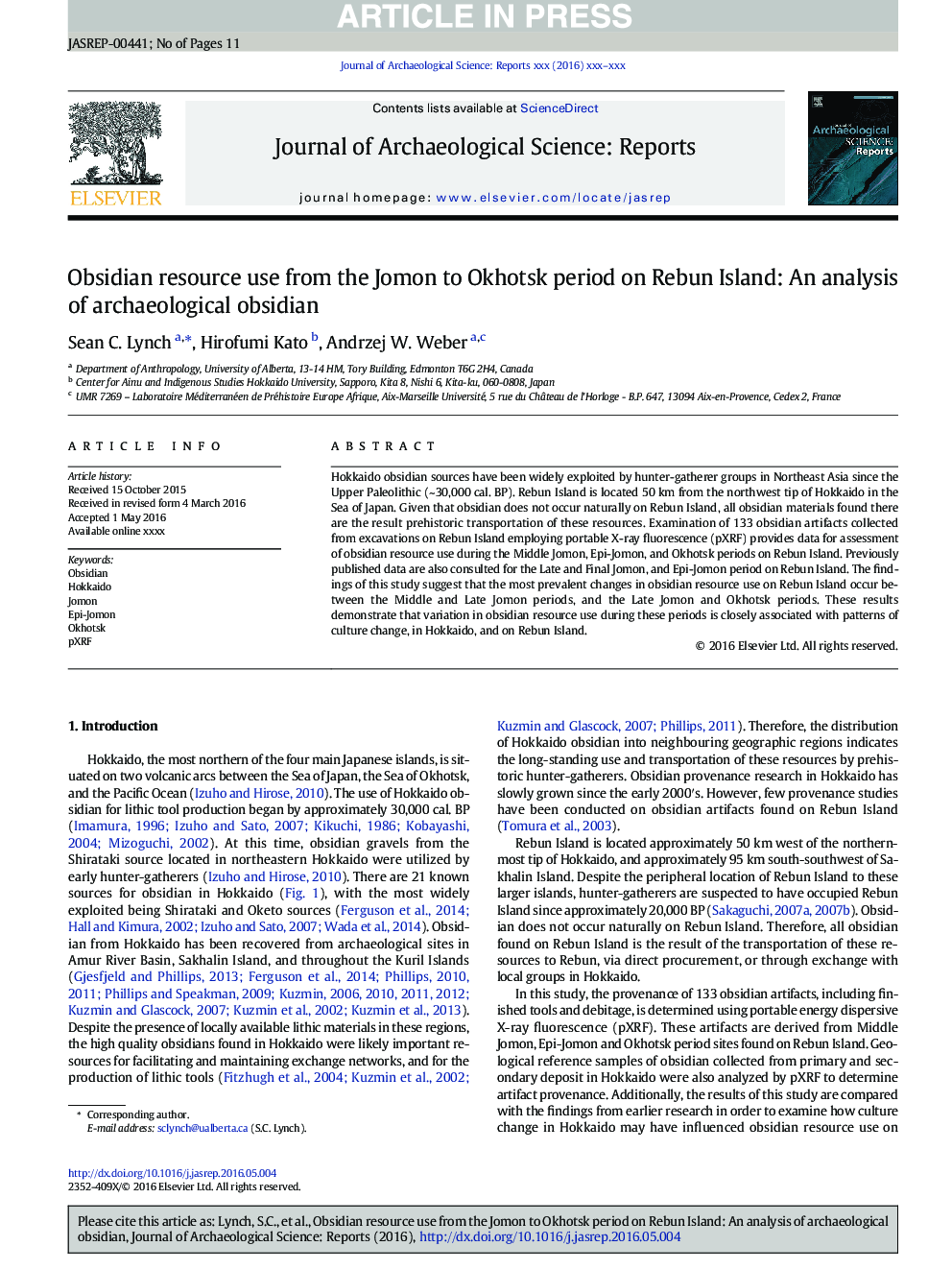| Article ID | Journal | Published Year | Pages | File Type |
|---|---|---|---|---|
| 7444977 | Journal of Archaeological Science: Reports | 2018 | 11 Pages |
Abstract
Hokkaido obsidian sources have been widely exploited by hunter-gatherer groups in Northeast Asia since the Upper Paleolithic (~30,000Â cal. BP). Rebun Island is located 50Â km from the northwest tip of Hokkaido in the Sea of Japan. Given that obsidian does not occur naturally on Rebun Island, all obsidian materials found there are the result prehistoric transportation of these resources. Examination of 133 obsidian artifacts collected from excavations on Rebun Island employing portable X-ray fluorescence (pXRF) provides data for assessment of obsidian resource use during the Middle Jomon, Epi-Jomon, and Okhotsk periods on Rebun Island. Previously published data are also consulted for the Late and Final Jomon, and Epi-Jomon period on Rebun Island. The findings of this study suggest that the most prevalent changes in obsidian resource use on Rebun Island occur between the Middle and Late Jomon periods, and the Late Jomon and Okhotsk periods. These results demonstrate that variation in obsidian resource use during these periods is closely associated with patterns of culture change, in Hokkaido, and on Rebun Island.
Related Topics
Social Sciences and Humanities
Arts and Humanities
History
Authors
Sean C. Lynch, Hirofumi Kato, Andrzej W. Weber,
